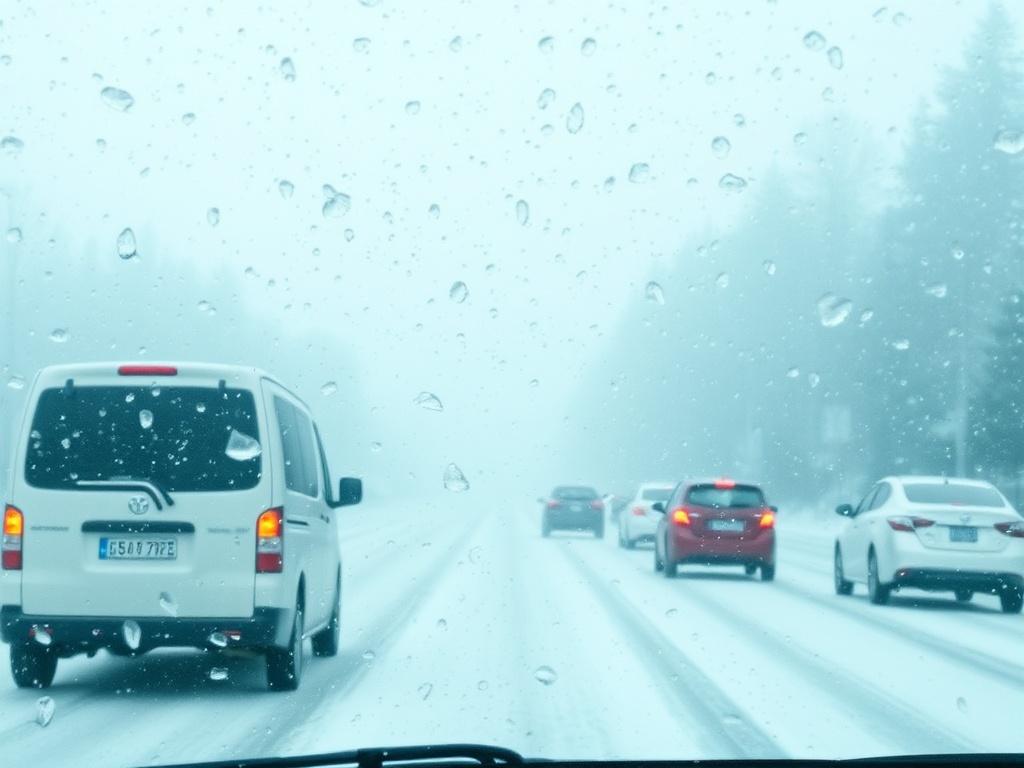
How to Travel During Bad Weather: A Complete Guide to Staying Safe and Enjoying Your Journey
Traveling is an adventure that brings excitement, new experiences, and memories to cherish. But what happens when bad weather strikes during your trip? Whether you’re planning a road trip, heading to the airport, or exploring a new city, bad weather can throw a wrench into your plans. From heavy rain and snowstorms to strong winds and fog, adverse weather conditions demand preparation, patience, and a bit of flexibility. In this article, we will explore how to travel during bad weather by sharing practical tips, safety measures, and creative strategies to help your journey go smoothly despite the elements.
Understanding the Challenges of Traveling in Bad Weather
Not all travel conditions are created equal. When the skies darken and the weather turns rough, the way you travel changes dramatically. Bad weather can affect transportation options, cause delays, and even compromise safety. For drivers, slippery roads and limited visibility increase the risk of accidents. For air travelers, storms frequently lead to canceled or delayed flights. Train services may be disrupted too, and walking around unfamiliar places in bad weather reduces your enjoyment and safety.
That’s why understanding the challenges of traveling in bad weather helps you prepare adequately. Knowing what to expect and how to respond to these challenges is half the battle won.
Types of Bad Weather That Affect Travel
Let’s break down the most common bad weather types you might encounter while traveling:
- Rain and Thunderstorms: Wet roads, flooding, and poor visibility are typical problems during heavy rain and thunderstorms.
- Snow and Ice: Snowstorms can block roads, slow traffic, and create dangerously icy surfaces for driving and walking.
- Fog: Dense fog reduces visibility drastically, making driving and navigating unfamiliar areas risky.
- High Winds: Strong winds can affect vehicle control, delay flights, and make outdoor conditions unpleasant or dangerous.
- Extreme Heat or Cold: While not always considered “bad weather,” extreme temperatures pose health risks and can affect travel comfort and safety.
Knowing which type of weather you’re facing will dictate how to travel during bad weather effectively.
Planning Your Trip Around the Weather
One of the best ways to deal with adverse conditions is to plan ahead. How you travel during bad weather often depends on your preparation before the trip even begins.
Check Weather Forecasts Regularly
Before you head out, keep a close eye on weather forecasts for your route and destination. Use reliable weather apps and websites to receive timely alerts about severe weather warnings. This information helps you adjust your plans accordingly, such as choosing alternative travel dates or routes less likely to be affected.
Choose the Right Mode of Transportation
Some modes of transportation are more resilient to bad weather than others. For instance, trains tend to run more reliably in snow than cars, although they are not immune to delays. If flying, check the airline’s schedule for any anticipated delays or cancellations. When driving, you may want to avoid smaller roads more prone to flooding or closure during storms.
Plan for Extra Time
When traveling in bad weather, delays are almost inevitable. Give yourself plenty of extra time to reach your destination by leaving earlier than usual. This buffers against late arrivals and reduces the temptation to speed or take unsafe risks.
Essential Gear for Traveling in Bad Weather
Packing the right items makes a huge difference in how you travel during bad weather. Here is a table listing must-have gear for various weather conditions:
| Weather Condition | Essential Gear | Purpose |
|---|---|---|
| Rain and Thunderstorms | Waterproof jacket, umbrella, waterproof shoes, dry bags | Keep dry, prevent slipping, protect electronics/documents |
| Snow and Ice | Warm layers, insulated gloves, hat, snow boots, ice grips for shoes | Stay warm, prevent frostbite, secure footing |
| Fog | Reflective clothing, extra lights, fog lights (for drivers) | Increase visibility, assist in navigation |
| High Winds | Windbreaker jacket, secure luggage straps, sturdy hat | Protect from chilling winds, prevent loss of belongings |
| Extreme Heat/Cold | Hydration supplies, sunscreen, cooling towels / thermal wear | Prevent heatstroke or hypothermia |
This list helps when you are wondering how to travel during bad weather safely and comfortably.
Traveling by Car in Bad Weather
If you are wondering how to travel during bad weather by car, it’s important to adjust your driving habits and prepare your vehicle properly.
Before You Go: Car Preparation Tips
Make sure your car is ready for the weather conditions:
- Check Tires: Ensure your tires have adequate tread depth and are properly inflated for better grip on wet or icy roads.
- Top Up Fluids: Fill windshield washer fluid, oil, and antifreeze to avoid breakdowns.
- Test Lights and Wipers: Replace worn wiper blades and confirm all lights function correctly for visibility.
- Emergency Kit: Carry essentials such as jumper cables, blankets, flashlight, first aid kit, and snacks.
Driving Tips During Rain, Snow, and Fog
When behind the wheel during bad weather:
- Slow down: Wet or icy roads require reduced speeds to maintain control.
- Increase Following Distance: Leave more space between you and the car ahead to allow for longer stopping distances.
- Use Headlights Properly: In rain and fog, use low beams to avoid glare and improve visibility.
- Avoid Sudden Movements: Gentle acceleration, steering, and braking help prevent skidding.
- Know when to stop: If visibility is too poor or roads are unsafe, find a safe place to park and wait it out.
How to Travel During Bad Weather by Air
Air travel can be tricky when the weather isn’t cooperating, but with some foresight, you can navigate delays and cancellations more effectively.
Stay Informed Before and During the Flight
Airlines generally notify passengers of weather-related disruptions. However, it’s a good idea to:
- Check your airline’s website or app regularly for updates.
- Sign up for text or email alerts.
- Track airport weather conditions through dedicated sites.
Packing Tips for Air Travel in Bad Weather
Packing smart when you anticipate weather disruptions is crucial:
- Carry a change of clothes and essential toiletries in your carry-on in case of lost luggage.
- Bring snacks and entertainment since delays can be long.
- Dress in layers to adjust to fluctuating temperatures in airports and planes.
Handling Flight Delays and Cancellations
Bad weather sometimes forces airlines to delay or cancel flights. Here are practical steps:
- Stay Calm: Panicking only adds stress and clouded judgment.
- Contact the Airline: Reach out for rebooking options and compensation policies.
- Look for Help Desks: Airline counters and customer service desks often have staff to assist.
- Consider Alternative Airports: Nearby airports might be less affected by weather.
How to Travel During Bad Weather on Public Transportation
Public transport, like buses and trains, can also be unpredictable during harsh weather.
Stay Updated on Service Changes
Local transit authorities usually provide real-time updates through websites and social media. Check these before and during your trip.
Be Prepared for Delays
Weather can cause slowdowns or cancellations for public transportation. Pack extra water, snacks, and something to keep entertained while waiting.
Stay Safe While Waiting
If bus stops or train stations are exposed, bring appropriate clothing and seek shelter as needed. Avoid standing on slippery surfaces.
Tips for Walking or Biking in Bad Weather
Not all travel involves vehicles, and sometimes, walking or biking is your only option.
Dress for the Weather
Wear waterproof or windproof clothes, sturdy shoes with good grip, and suitable hats or gloves.
Take Extra Caution
Better to take slow steps and avoid puddles or icy patches. Visibility may be limited for both you and drivers, so use reflective gear or lights.
Know When to Pause Travel
Severe weather such as thunderstorms with lightning or heavy snow is a good reason to postpone walking or biking until conditions improve.
How to Stay Comfortable and Entertained When Weather Forces Delays
No one likes being stuck waiting, especially in bad weather. Here are ways to stay comfortable and make the most of the situation.
- Carry a good book, podcasts, or downloaded movies.
- Bring portable chargers for your devices.
- Keep snacks and water handy.
- Wear layers to adjust to temperature changes.
- Practice deep breathing or meditation to stay calm.
Health and Safety Considerations
Traveling during bad weather isn’t just an inconvenience—it can pose genuine risks. Here are some health and safety guidelines:
Stay Hydrated and Nourished
Adverse weather can cause dehydration or fatigue quicker than you expect. Drink plenty of water and eat balanced meals or snacks.
Avoid Overexertion
Whether shoveling snow or carrying heavy luggage, excessive physical strain in cold weather can lead to injuries.
Protect Your Skin
Even on cloudy or rainy days, UV rays can harm skin. Use sunscreen and moisturizers, especially in cold or windy environments.
Know Emergency Contacts
Have local emergency numbers saved on your phone. Know the location of hospitals or clinics along your route or near your accommodation.
Summary Table: Quick Tips on How to Travel During Bad Weather
| Aspect | Key Recommendations |
|---|---|
| Planning | Check weather forecasts; plan extra time; choose weather-appropriate transport |
| Packing | Bring weather-appropriate clothing; emergency items; snacks and entertainment |
| Driving | Slow down; increase following distance; prepare car; avoid sudden moves |
| Flying | Monitor flight status; carry essentials in carry-on; stay calm during delays |
| Public Transport | Check updates; prepare for delays; dress appropriately; find shelter |
| Walking/Biking | Use protective gear; move cautiously; postpone if weather severe |
| Health & Safety | Stay hydrated; avoid overexertion; use sun protection; know emergency contacts |
Conclusion
How to travel during bad weather boils down to preparation, patience, and prioritizing safety. Weather delays and disruptions are frustrating, but with the right mindset and practical strategies, you can manage them effectively. Check forecasts, pack smartly, adjust your travel methods, and give yourself extra time to cope with surprises. Whether you drive, fly, use public transportation, or move on foot, staying informed and equipped is key to navigating rain, snow, fog, and wind. Travel should be about enjoyment and discovery, and by learning how to travel during bad weather, you can keep those positive experiences alive regardless of the elements outside. Safe travels!




